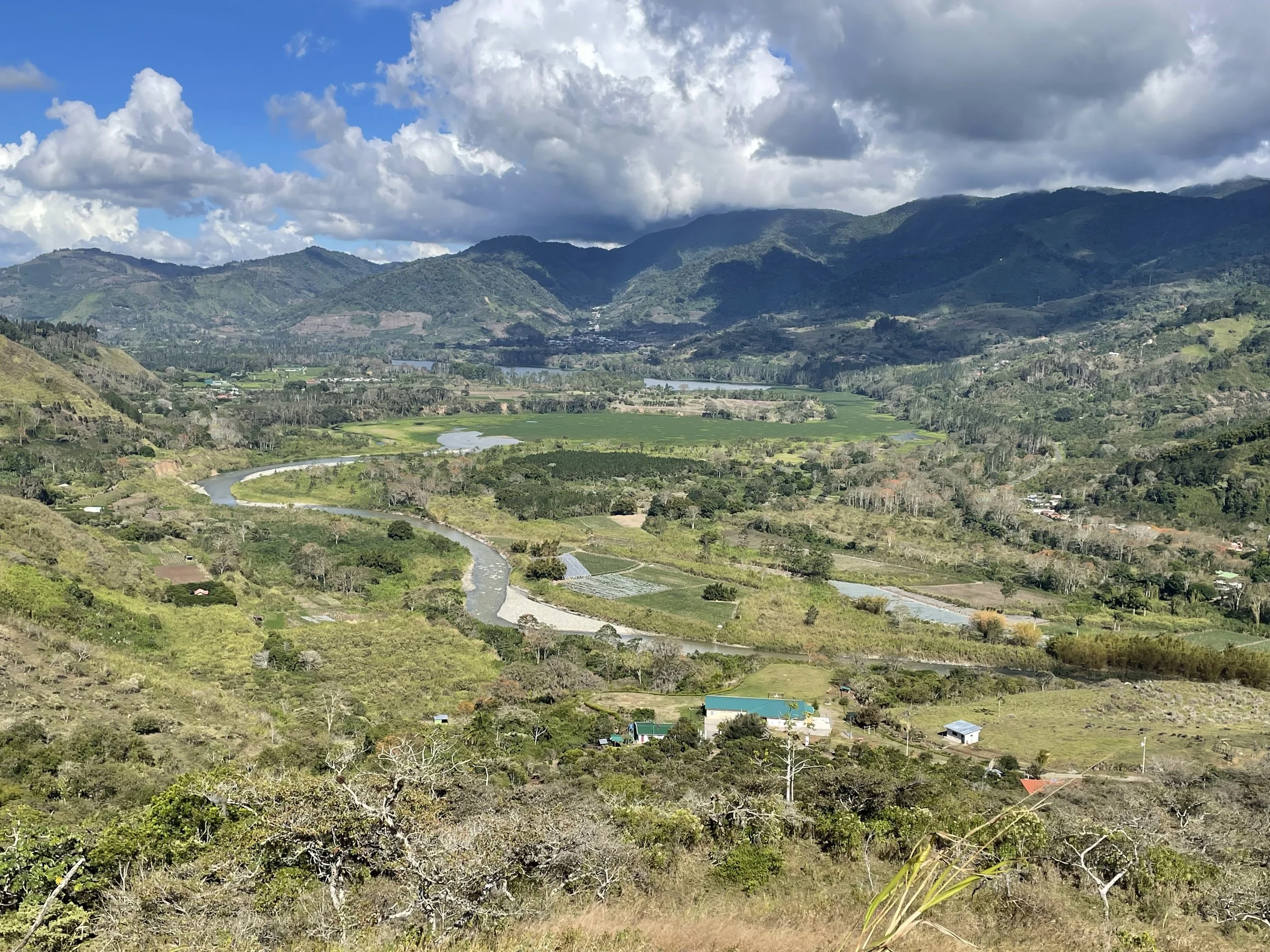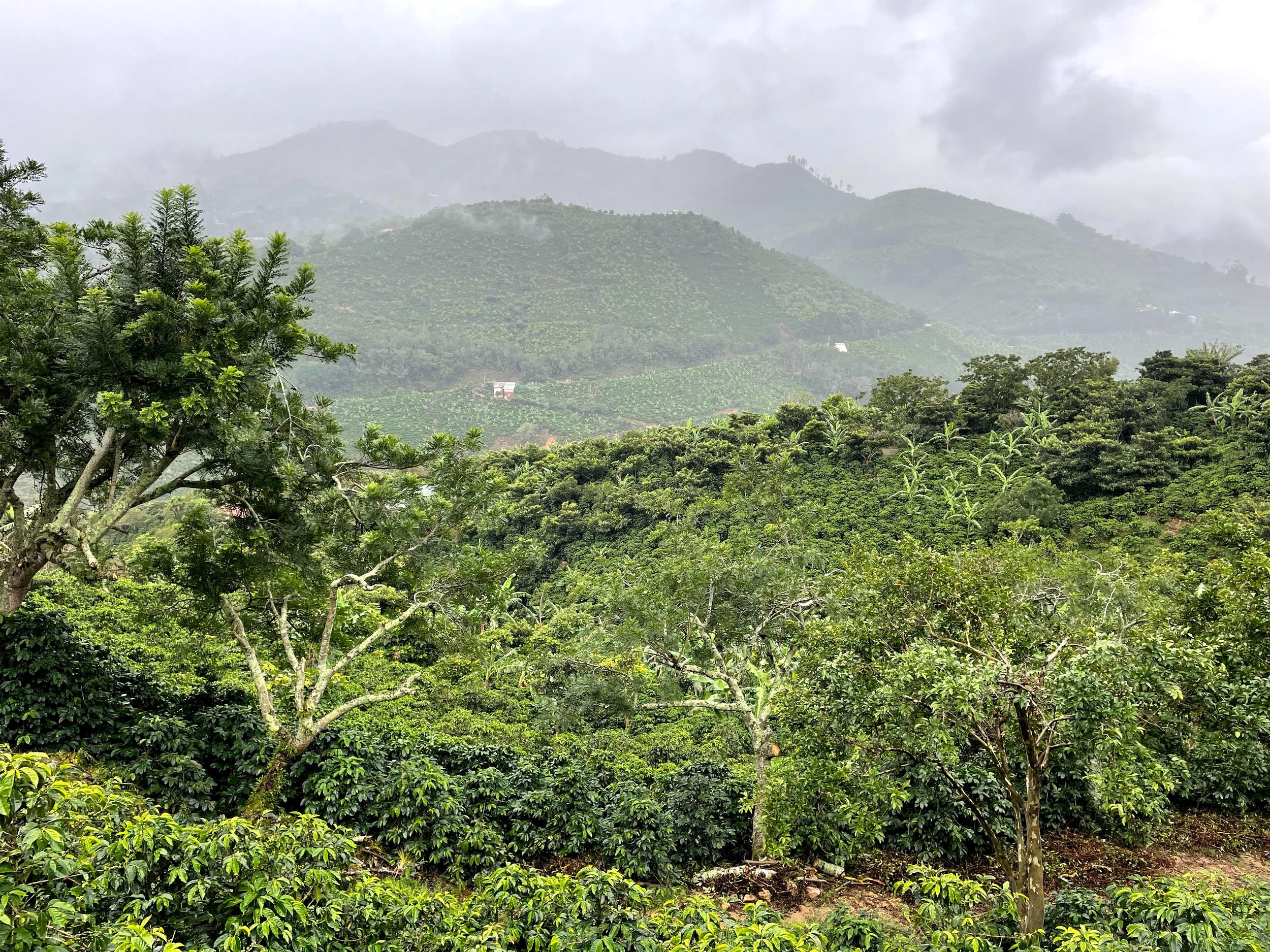Peaks, Palms, and Paradise: Your Costa Rica Caribbean to Highlands Itinerary
The best itinerary to explore Costa Rica’s diverse natural landscapes
Key Itinerary Overview:
Highlights: Stops on this itinerary include a massive active cone volcano, pristine white sand beaches, and a coffee lover’s paradise with just a little history thrown in the mix.
Airport: Juan Santa Maria (SJO)
Itinerary Length: 5–10 days, depending on the pace you want to take.
Adventure Level: Medium
Best Time of Year: December–April
Caribbean Coast Starting Point: Punta Uva (Days 1–4)
If you’re like me and have flight anxiety, it’s best to start at the furthest point and make your way back to the airport. Punta Uva is the place to start. From SJO, it takes about 5-6 hours driving (Google Maps will tell you 4), so give yourself the day, but it’s well worth it. On the way there, take Route 32, since you’ll be coming back via Route 10.
Driving Logistics: Route 32 We recommend starting the trip on Route 32, since you’ll be coming back via Route 10. Be aware of heavy truck traffic.
Warning: From May–November (rainy season), this road closes frequently due to rain and fog, so check Waze before starting your route.
Route 32 is like traveling through a portal to a completely different climate; you’ll feel the heat of the Caribbean as you descend from the mountains. Stop along the way to take pictures of the towering walls of monsterra plants and the wilderness of the Braulio Carrillo National Park.
Once you reach Punta Uva, unload all your stress and soak in the Pura Vida lifestyle. Punta Uva is centrally located between the funky towns of Puerto Viejo and Manzanillo, each with a rich culture of Afro Caribe music and delicious food. This is where you must try Rice and Beans - a spicy coconut infused plate usually paired with melt in your mouth, fall off the bone chicken thighs. This area is the only English-speaking area in Costa Rica, and they combine it with some Patua (a mix of Spanish, French and English) as well.
Things to Do in Punta Uva
Punta Uva is great for doing nothing except sitting on the beach and floating in the calm, clear Caribbean waters. But if you’re like my husband and can’t sit still, there is still plenty to do.
Relaxation: Simply sit on the beach and float in the calm, clear Caribbean waters.
Active Exploration: Kayak or paddleboard in the freshwater mangroves to spot birds and howler monkeys.
Beach Hopping: Spend a day exploring the Gandoca-Manzanillo National Refuge. Pro Tip: Bring water, bug spray, and only natural foods (no plastic bags).
Culture: Take a tour through the Bri Bri Indigenous Reserve to learn about their use of chocolate and medicinal flora, then stop at a waterfall on your way back to Cahuita National Park.
After you’ve soaked up the sun and eaten your weight in coconut flavored dishes, it’s time to make your way to cooler temperatures in Turrialba via Route 10!
One of the many beaches you can dive off the trails to at Gandoca-Manzanillo National Refuge
Volcano Thrills:Turrialba (Days 5-7)
Route 10 is a gorgeous way to see daily life and the agricultural side of Costa Rica. You’ll pass through little villages and dairy farms. Check out the spinach, cauliflower, and onions growing in the cool high altitude regions. Once you arrive in Turrialba, take the afternoon to explore the small town. Buy some empanadas from a local shop with fresh Turrialba cheese melted inside and enjoy a cup of afternoon café as the Ticos do. Turrialba is the jumping off point for many adventurers, and there is plenty to do here if you are seeking thrilling experiences.
Things to Do in Turrialba
Turrialba Volcano Hike: Hike the Turrialba Volcano with a guide. It was closed until 2021 due to frequent explosions. We recommend using the Hacienda Central group—we’ve done their tours twice and have always found their guides to be incredibly well-educated, funny, and safety-oriented. Keep in mind: this is a high-altitude hike, reaching close to 10,000 feet.
White Water Rafting: Turrialba town is the gateway for many rafting companies on the infamous Pacuare River, featuring mostly Class III–IV rapids.
Low-Key Culture: Immerse yourself in a full-day coffee experience at the Casa Hacienda La Esperanza, learning about the history and culture of coffee production.
Turrialba Volcano on a clear day with the fertile vegetable crops thriving in its skirts.
After you’ve gotten your heart pumping in Turrialba, you’ll move on to the calmer portion of the itinerary in Cartago and Santa Maria de Dota.
Coffee & Quetzals: Cartago/Santa Maria De Dota (Days 8–10)
Now you’re slowly making your way back towards the airport but, you still have a few days left to enjoy Costa Rica. On your way to Santa Maria de Dota, take a pit stop in Cartago, Costa Rica’s original capital before it was moved to San Jose in 1823. You can visit the Basilica de Los Angeles, where every year, tens of thousands of Costa Rican’s make the pilgrimage from San Jose on the day of the patron virgin of Costa Rica. You can also see the ruins of an old Catholic church destroyed by earthquakes, where you can sit on the lawn and people watch.
If you have time, you can visit the fertile and verdant Orosi Valley and see the Cachi Dam, which produces electricity as part of Costa Rica’s robust renewable energy grid.
The Cachi Valley as seen from above with Lake Cachi in the distance.
As you climb into the mountains outside Cartago, you’ll be entering the aptly named Zone of the Saints (Zona de Los Santos), part of the Costa Rican Highlands, and the most famous coffee region of Costa Rica. You’ll notice the temperature dropping slightly and may even get to experience the Costa Rican mist, which makes everything more magical. Stop by the DOTA Coffee Cooperative and enjoy a coffee with a carrot cake or cinnamon bun (both are the best I’ve tried in Costa Rica) at their riverside café. You can even take a tour of their facilities and surrounding coffee plantations and see the process firsthand.
Lattes and a divine piece of chocolate cake on a cool misty day are the perfect way to warm up.
The magical Costa Rican mist mentioned above
Things to Do in Santa Maria De Dota
There are some cozy Airbnb cabin rentals in the area, for relaxing and reading on the porch, soaking in the freshest air and enjoying the local coffee, but if you’re into camping, check out the Sir Manuel Lake (Lago Don Manuel) for affordable camping and kayak rentals on a small lake.
If you are interested in birding, this area has some of the best spots in the world, and Quetzal Paradise (Paraiso Quetzales) is a beautiful rustic lodge and property that offers private and public hiking and birding tours, plus it has an incredible porch where thousands of hummingbirds gather at their feeders and buzz around your head. You’re also right by Quetzales and Tapanti National Parks for more birding and hiking.
For a little history, spend the day at the La Lucha (translates to the fight for a dream) farm and museum. It features the house of the ex Costa Rican president Jose Figueres Ferrer, who abolished the military and started Costa Rica’s tendency toward renewable energy. There’s also extensive mountain biking and hiking trails, and a restaurant to enjoy afterward. You can easily spend an entire day in this farm.
A male quetzal as seen through a telescope on a tour with Quetzal Paradise Lodge.
Frequently Asked Questions (FAQ)
What is the Patua language I might hear on the Caribbean Coast?
Answer: Patua (or Mekatelyu) is a creole language unique to the Limón province of Costa Rica, particularly in towns like Puerto Viejo and Cahuita. It's a blend of English, Spanish, and West African languages, developed by the descendants of Jamaican immigrants. While English is common, hearing Patua is a unique cultural experience that reflects the region's heritage.
Are the driving conditions on Route 32 and Route 10 challenging?
Answer: Yes, they can be. Route 32 (SJO to Limón) involves mountain passes prone to heavy fog and truck traffic and can close during the rainy season. Route 10 (Limón to Turrialba/Cartago) is generally a more scenic but winding mountain road with varying pavement quality, making a cautious driving pace essential. Always check conditions on Waze before starting.
What is the significance of the Basilica de Los Angeles in Cartago?
Answer: The Basilica is a highly significant Catholic site in Costa Rica. Every year on August 2nd, tens of thousands of Ticos participate in the Romería, a massive pilgrimage from San José to the Basilica, in honor of the country's patron saint, La Negrita (Our Lady of the Angels). It is a major expression of Costa Rican faith and culture.
How is the temperature different between Punta Uva and Santa Maria de Dota?
Answer: The temperature difference is dramatic, making this itinerary truly diverse. Punta Uva on the Caribbean coast is hot and humid, with temperatures averaging 80 F. Santa Maria de Dota (in the Highlands) is significantly cooler, with daytime highs around 65 F, often dropping into the 50F at night, complete with misty fog.
What local dish must I try in the Turrialba region?
Answer: When in Turrialba, you must try Turrialba Cheese (queso Turrialba). It is a soft, fresh, white cow's milk cheese made in the region and is unique to the area. It is delicious simply served with coffee, baked into an empanada, or melted on local bread.






